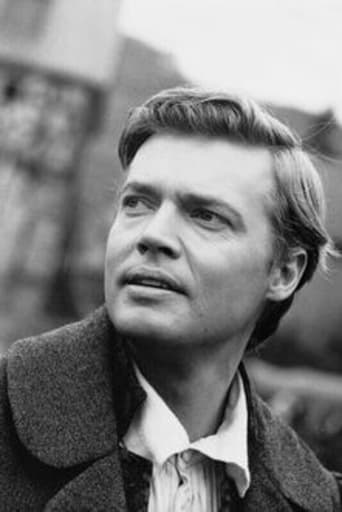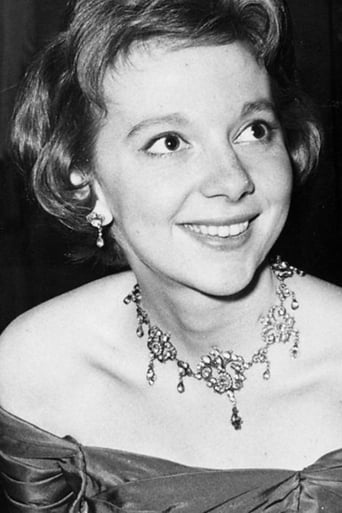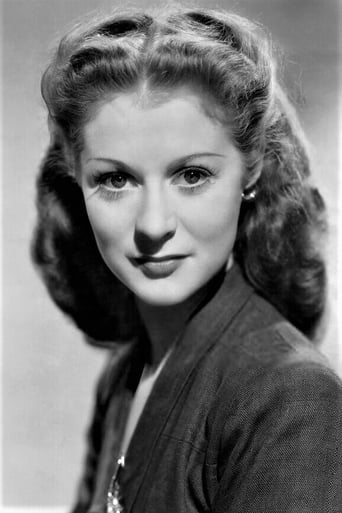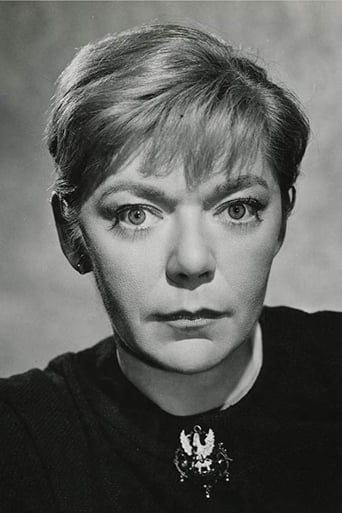Inclubabu
Plot so thin, it passes unnoticed.
Protraph
Lack of good storyline.
Sharkflei
Your blood may run cold, but you now find yourself pinioned to the story.
Micah Lloyd
Excellent characters with emotional depth. My wife, daughter and granddaughter all enjoyed it...and me, too! Very good movie! You won't be disappointed.
rdoyle29
This film that, so loathed by everyone in 1960 that it effectively ended the film career of a prestigious director, feels a good decade ahead of it's time. It seems a bit puzzling at first that "Psycho" could be released in the same year and be a success for Hitchcock, and that this film would ruin Powell, but it makes sense when you really look closely at the films. Hitchcock's film has shocking content, but the shocks have a somewhat safe and innocuous character to them. Hitchcock wouldn't really delve into the sort of perverse and unseemly violence you find in this film until "Frenzy", over a decade later. Powell's film delves into the mix of sex, voyeurism and violence that De Palma would delve into in the 70's and 80's, and while this is not simply "a De Palma film made 20 years earlier" (it's less slick, but also a bit more artful), the comparison shows why it took so long for anyone to appreciate this film.
TheRedDeath30
For the true horror movie fanatic, there are certain movies that are required viewing as they had such an impact on the horror landscape that one cannot truly understand the history of the genre without experiencing those films. PEEPING TOM is most certainly in that category. The year 1960 was a pivotal moment in horror's evolution as the releases of this movie, along with PSYCHO and BLACK Sunday, had a profound mark on horror and clearly delineate the change from the old "monster movie" to modern horror.A museum piece does not a entertaining view make, though, and there are many movies that film historians will tell you are landmark films, but may not entertain a modern audience any longer. So, the question is when we put the opinions of the film snobs aside and the importance of this movie, is it actually a good movie? I am happy to say that it is, but in truth I didn't appreciate enough on my first view, but after seeing it again after a few years, I truly enjoyed the movie.This movie is not going to deliver a lot of kill scenes, gore, or "scares". It's just not that sort of horror. It's often called the British PSYCHO, though I don't feel it's fair to consistently compare the movies. PSYCHO is, in some ways, a much more deliberate horror movie, while this film is understated. Yes, we get some murders, done in fabulous style (a style that Mario Bava almost certainly imitated in later films), but most of the movie is what a film critic might call a "character study". The movie's depth and interest comes from the main character, Mark's, background, his history and the actor's's devotion to implementing a rich emotional feel to the character, making him a sympathetic, damaged person, more than a "monster" or "psycho".Clearly, a large part of the theme of this movie is voyeurism, which plays out in many ways. We learn of Mark's father, a scientist who used Mark in his experiments on fear, documenting his life in sight and sound in an ultimate voyeurism. Mark work in his, in his off time, making girlie photos that are sold in the news stand. Of course, Mark's obsession with his camera, and the way that he films his murders works as a double expression of voyeurism. Mark, of course, is a voyeur, watching his work over and over through the safety of his lens, but we, the audience, as also made to be voyeurs through the POV camera angles that are used throughout the movie. This is, perhaps, why audiences were so revolted by this movie, which has no more violence or sex that anything Hammer was doing at the time, but it's that finger pointing at the audience, making us feel "dirty" for watching these crimes from our point of view that may have turned so many away.The movie is gorgeous to watch. The rich, saturated technicolor gives it a vibrant look that is no longer seen in movies and, I for one, appreciate it greatly. It makes the movie feel as if it's in another world, like the document of a deviant from Oz. I've been exposed to plenty of classics that bored me to death, but this is one horror classic that is well worth the time.
Alice Digsit
I had a rather odd viewing of this film in that I half-watched it at a the house of friend of mine who happens to be colour-blind. We were talking and the sound was down for much of the time and I didn't see the beginning or the end. But what I saw mesmerised me.Having not really caught much of the plot except for moments when my host was making tea, I am reminded more of Blow-Up, made several years later, than of any other film. The main character of the film seemed to be photography itself, and the psychology of the antihero and his victims faded into insignificance in the fragmented view of the film that I had.Not only did cameras abound in the film, and were at once the means of vision - both in the sense of the making of film itself and also in the sense of being the main agency in allowing the protagonist to fulfil his aims - they are perhaps also cyphers for seeing and for viewpoint and for perspective and outlook, drawing the viewer into a world of questions on these subjects.What fascinated me most about the film though was the colour. This was frustrated by my only having my colour-blind friend to discuss it with, and while he does see quite a lot of colours he doesn't see them all and this undermines his interest in colour generally.This film was made long after 2-colour films were obsolete, yet the film is shot to look like 2-colour Technicolor. IMDb credits it as using Eastmancolor 35mm film, so the colour set-ups in the film are self-consciously reproducing an earlier era of film by controlled use of hair colourings, set design, light gels and costume. The palette of the film is fascinating and beautiful, revisiting the stylised colour gamut which had decades earlier - after it's initial impact - come to leave film audiences unsatisfied by its unrealism. By the time this film was shot audiences were accustomed to rich full-spectrum photography and the colouring of the film subverts that, while highlighting the beauty of the older films at their best with, perhaps, an added glow that memory and nostalgia and better technology can create.Having missed most of the plot of the film, I have no idea if this colour lushness is purely a sensual layer of technical beauty this film is imbued with or whether it has an important interaction with the film's philosophical or psychological elements - but it sure was good to look at.
jimpayne1967
I first came across this film 30 years ago after reading the entry for it in Danny Peary's book on Cult Films and, as I was a great fan of a couple of the Powell and Pressburger I was curious to see it- Peary was very enthusiastic and the cult has grown since then and it is now very highly rated.I think the ending is terrific- disturbing, creepy and poignant rather than scary and definitely worth waiting for.But the rest of the film is a bit sluggish and some of the acting is a bit ropey with Carl Boehm being neither sinister nor sympathetic enough though Maxine Audley and Anna Massey are superb and Shirley Ann Field looks nice as always. Real life glamour model Pamela Green looks splendid too and if you look hard enough she reveals more than had been revealed in a mainstream British film before. There are interesting subtexts about sexuality, voyeursim, cinema itself and (possibly) post war British attitudes to Germans in this film and 55 years on the surface subject is still quite shocking but this is not, I think, a great film. It has an eerie score, some good bits but it is nothing more than 'worth catching' as opposed to the masterpiece it is now considered to be.












